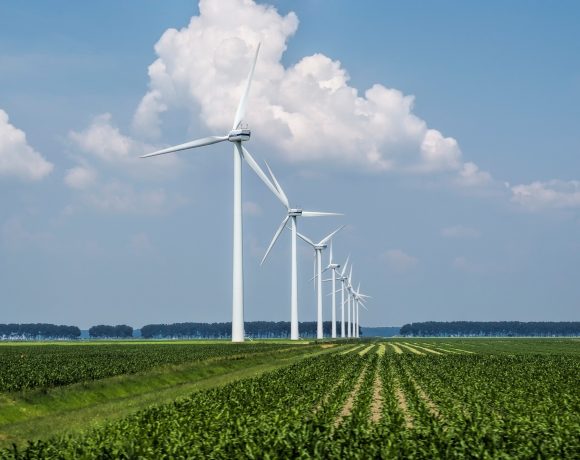
Renewable Energy Now 49% of India’s Power Mix
India has marked a significant milestone in its transition toward sustainable energy. As of April 2025, renewable sources, including solar, wind, biomass, small hydro, and nuclear, now account for 49% of the country’s total installed power capacity. This is a dramatic rise from 32% in 2014, underlining the government’s sustained push for green energy.
This achievement was highlighted by Union Power Minister Manohar Lal, who described the development as a “transformational leap” in India’s energy journey. The minister also noted that several states have been directed to diversify their power mix, introduce smart metering, and improve compliance under public-private partnerships.
Solar and Wind Lead Capacity Growth
India’s solar and wind energy capacities have seen robust expansion. As of April 2025, solar capacity reached approximately 107.94 gigawatts (GW), while wind energy installations stood at 50 GW. The financial year 2024-25 alone saw the addition of 30 GW of renewable power, enough to power over 18 million homes.
Government data shows that India now has a cumulative renewable project pipeline exceeding 500 GW, keeping the country on track to achieve its 2030 target of 50% power capacity from non-fossil sources.
Gap Between Installed Capacity and Actual Use
While the increase in capacity is commendable, actual power generation from renewables remains disproportionately low. Renewables contributed just 24% to total electricity generation in 2024 due to issues such as inconsistent supply, grid bottlenecks, and lack of storage infrastructure.
To meet its growing energy demands—expected to peak at 446 GW by 2034-35—India must resolve these gaps. The government is encouraging investment in transmission lines, energy storage solutions, and grid modernization to support integration of renewable sources.
Financing and Policy Hurdles
Despite the momentum, India’s renewable sector faces financial constraints. Experts estimate an annual investment requirement of $68 billion to meet the 2030 goals. However, only about $13 billion was raised in 2024, pointing to a significant shortfall. Project delays, land acquisition problems, and regulatory uncertainty continue to hamper investor confidence.
In response, the government has extended commissioning deadlines for delayed solar projects and is actively promoting green bonds to raise capital. States have also been asked to accelerate the rollout of smart meters and improve energy accounting systems to ensure better grid performance and loss reduction.
The Road Ahead
India’s transition to clean energy is well underway, but challenges in infrastructure, financing, and regulatory clarity must be addressed to sustain progress. The focus must now shift from just capacity creation to ensuring energy delivery, efficiency, and long-term resilience.
If current momentum is maintained and bottlenecks addressed, India is poised not just to meet its domestic needs but also to emerge as a global leader in renewable energy.


















